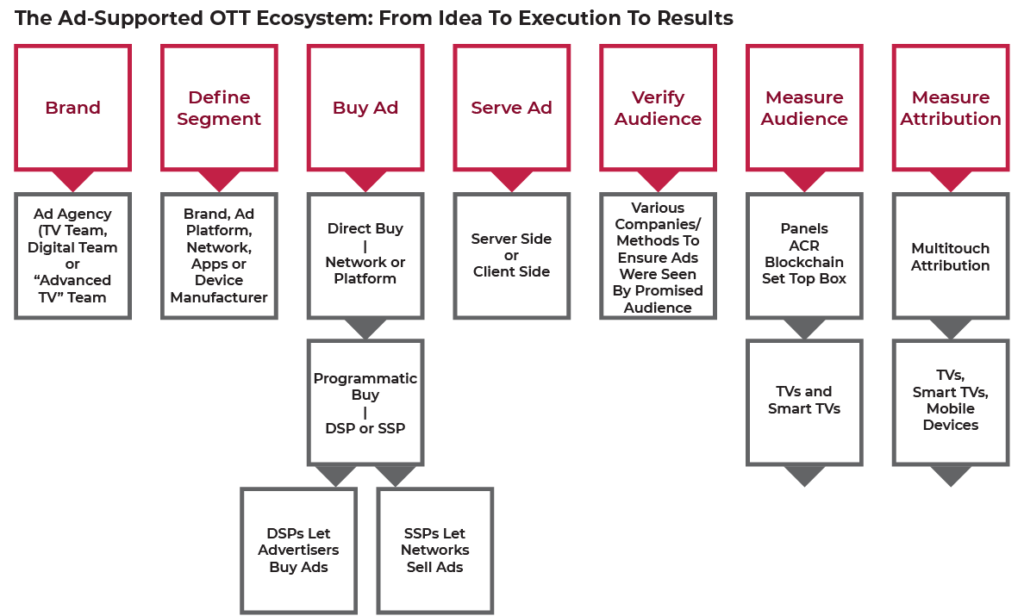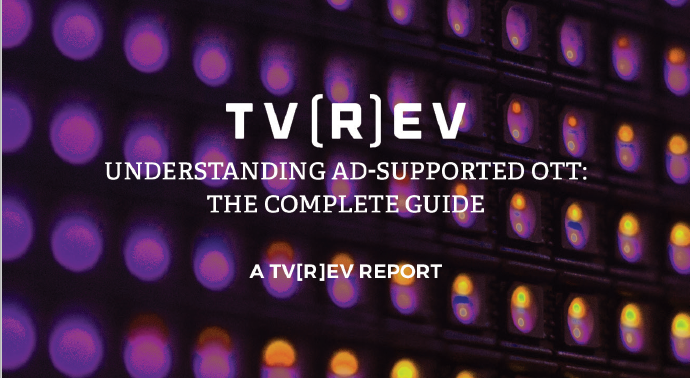Source: blog.biakelsey.com, March 2019
BIA’s coverage of the advanced TV sector includes the rising star of Over-the-Top (OTT) ad-supported TV. For those seeking a primer about this space, we’ll call out our fellow industry analysts Alan Wolk, co-founder and lead analyst of TV[R]EV, along with co-author Mike Shields, for their new report, Understanding Ad-Supported OTT: The Complete Guide.
OTT is not an easy topic to cover. In fact, Wolk and Shields open the report with, “Turns out we severely underestimated just how much confusion there really is.”
Nonetheless, for a number of reasons the report comprehensively and, often provocatively, details how from these seeds of confusion a new TV industry is rising up. The script is being written now, and this report provides a deep and insightful look into the players and the plot.
The journey begins with an explanation of the parts and pieces of the ad-supported ecosystem and how it all works together. Wolk and Shields build a comprehensive picture from over 100 interviews with executives from TV networks, agencies, brands and tech firms.
Wolk and Shields frame the report by starting with establishing definitions and fundamental concepts of how the ad-supported OTT ecosystem works. Then they consider deeper and broader implications for how OTT can, and will, scale and what this means for traditional TV.


While certainly there is a lot of upside in OTT, traditional linear TV’s role will not be unseated easily for various reasons. However all signs point to what the author call the “Spotifyization” of television. By this they refer to a system where almost everything is available on demand and personalized, but network and platform provided ad-supported linear feeds still remain in demand. Spotify offers on-demand content, but also provides curated linear channel experiences such as its personalized “Daily Mix.”
The future of OTT rests on the growth of vMVPDs and apps. The future of TV overall rests on how the traditional TV industry develops and rolls out strategies to bring a 70-year old business model squarely into the digital age.
More valuable learnings are detailed in this report. The authors have kindly provided a discount code for BIA readers who’d like to buy the report. Use BIA2019at checkout.

